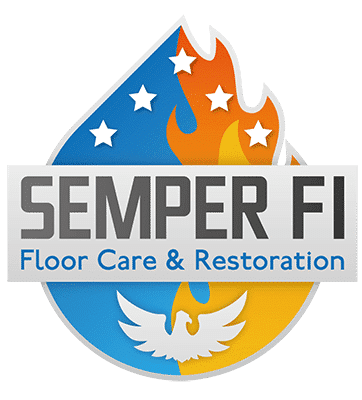Hidden leaks are one of the most troublesome and costly issues a homeowner can face. These leaks often go unnoticed for weeks or even months, slowly causing damage behind walls, under floors, or in ceilings. By the time they’re discovered, the cost of repairs may be significant—not just in plumbing fixes but in water damage, mold remediation, and structural repair.
At Semper Fi Floor Care and Restoration, we’ve seen firsthand the kind of havoc hidden water leaks can wreak. Whether it’s a leaky pipe, hidden moisture in drywall, or water under your foundation, we’re here to help homeowners in Yuma, Somerton, Wellton, San Luis, and surrounding areas. If you suspect a hidden leak in your home, don’t wait—call us today at (928) 228-4960 for expert detection and repair.
Why Hidden Leaks Are a Big Deal
Small leaks can quickly turn into big problems. A slow drip from a pipe behind your wall may not be visible, but over time it can lead to:
- Mold and mildew growth
- Wood rot and structural damage
- Soaked insulation
- Increased water bills
- Pest infestations
The longer a hidden leak continues, the more extensive and costly the repairs become. Early detection is key.
Common Types of Hidden Leaks in the Home
1. Pipe Leaks Behind Walls
A very common type of hidden leak occurs when plumbing inside walls starts to deteriorate or rupture. These leaks may stem from old copper pipes, poorly soldered joints, or freezing temperatures.
Signs to look for:
- Discoloration on walls
- Bubbling paint or wallpaper
- Moldy smells
- Soft or spongy drywall
2. Slab Leaks
Homes built on concrete slabs can develop leaks in the water lines running under the foundation. These are among the hardest to detect.
Watch for:
- Hot spots on the floor
- Warped flooring
- Low water pressure
- Unexplained increase in your water bill
3. Leaking Fixtures
Sinks, bathtubs, and toilets can develop slow leaks that seep into surrounding cabinetry or flooring.
Indicators include:
- Damp cabinets
- Loose or shifting tiles
- Persistent musty odors
4. Roof Leaks Entering the Walls
A damaged or aging roof may allow water to penetrate into the attic and trickle down into your walls, creating hard-to-see leaks.
Clues include:
- Ceiling stains
- Peeling paint
- Mold growth in the attic
5. HVAC Condensation Leaks
Your air conditioning unit can cause water damage when condensation isn’t draining properly.
Signs include:
- Water pooling near the HVAC system
- Dripping from vents
- Rust or corrosion on nearby materials
6. Appliance Leaks
Dishwashers, washing machines, and water heaters can develop slow leaks from hoses or internal connections.
Look for:
- Water under appliances
- Buckled flooring
- Damp odors in laundry or utility rooms
How to Detect Hidden Leaks
You don’t need to wait for visible water damage to start looking for hidden leaks. Here are some strategies:
1. Monitor Your Water Bill
If your usage hasn’t changed but your water bill spikes, that’s a big red flag.
2. Use the Water Meter Test
Turn off all water fixtures in your home. Check your meter, wait 1-2 hours without using water, and check again. If it’s moved, you likely have a leak.
3. Infrared Cameras
Thermal imaging can help professionals identify cold or wet spots in walls, ceilings, or floors.
4. Moisture Meters
These tools measure the moisture content in building materials. If the reading is elevated, water is probably nearby.
5. Sound Detection Tools
Plumbers use acoustic devices to listen for water flowing behind walls or under slabs.
What to Do if You Find a Hidden Leak
If you suspect or identify a hidden leak:
- Shut Off the Water – Turn off the main water valve to prevent further damage.
- Call a Professional – Contact a licensed restoration contractor like Semper Fi Floor Care and Restoration at (928) 228-4960.
- Document the Damage – Take photos for insurance claims.
- Avoid DIY Repairs – Quick fixes can mask bigger problems. Let the pros diagnose and repair the issue.
Why Choose Semper Fi Floor Care and Restoration
- 24/7 Emergency Response – We’re always ready when disaster strikes.
- Licensed, Bonded & Insured – ROC# 349271
- Advanced Leak Detection Tools – We use thermal imaging, moisture meters, and more.
- Complete Restoration Services – From leak repair to mold removal and drywall replacement.
- Veteran-Owned and Operated – Integrity and dedication drive everything we do.
We proudly serve homeowners and businesses in Yuma, Somerton, San Luis, Wellton, and the surrounding communities.
Preventing Future Hidden Leaks
An ounce of prevention is worth a pound of cure. Here’s how to reduce your risk of hidden leaks:
- Inspect Plumbing Regularly – Look for corrosion or moisture under sinks and around fixtures.
- Upgrade Old Pipes – Replace galvanized or outdated piping with modern materials.
- Install Leak Detectors – Smart sensors can notify you of moisture or irregular water usage.
- Maintain Your Roof – Have it inspected yearly and repair damaged shingles or flashing.
- Keep Gutters Clear – Clogged gutters can cause water to back up and enter your home.
- Seal Windows and Doors – Prevent water intrusion during storms.
- Insulate Pipes – Especially in unheated areas, to prevent freezing and cracking.


